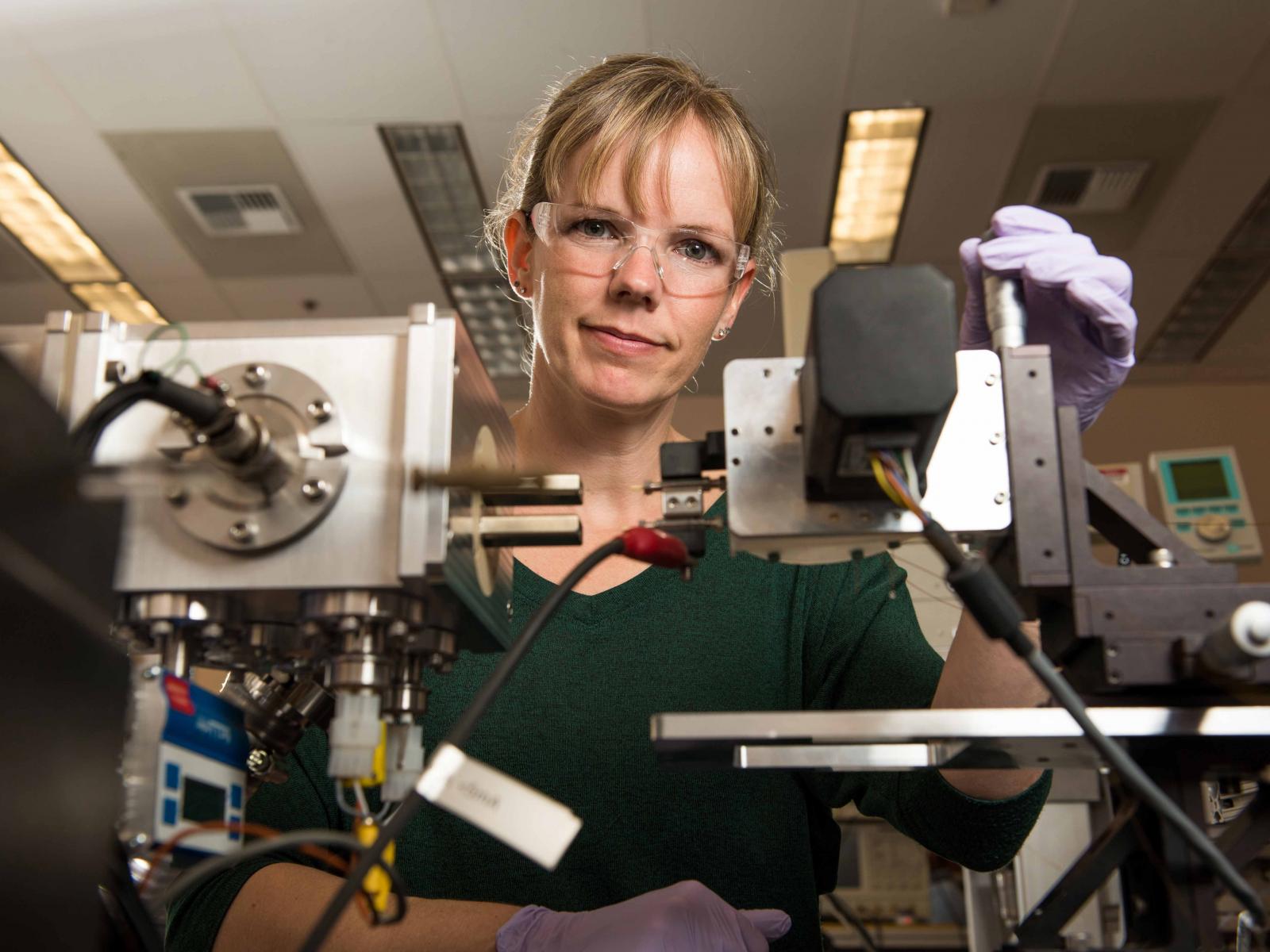Why is a Virus Fatal to One Person, but Not Another? PNNL is on it

PNNL researcher Erin Baker prepares an ion mobility instrument to collect genomics, proteomics and metabolomics data for disease and environmental studies. This research at PNNL involves studying the functions of genes, identifying the proteins expressed by the genes and recognizing the metabolites, or tiny molecules that remain as a result of cellular processes.
Photo courtesy of Pacific Northwest National Laboratory
At the Department of Energy's Pacific Northwest National Laboratory, we strive to understand the world around us. We also seek to understand "us" — that is, the human body and its inner workings. Our goal is to improve human health by determining what makes us susceptible to disease and other assaults on our well-being.
Our work in this area leverages our strong biological systems science capabilities. These capabilities allow us to study individual cells, communities of cells and entire organisms — investigating how they communicate, respond to their environment and regulate their functions. By knowing more about how organisms work, we can diagnose diseases earlier and treat them better. Ultimately, we wish to move from detection to improved prediction and prevention.
Researchers are advancing technology that can measure and identify hundreds of chemicals within a single sample of blood or other fluids.
Our research involves both experimental and computational approaches. Our scientists develop and advance new techniques in microscopy and mass spectroscopy to identify biomarkers that may identify or predict diseases, such as cancer and diabetes, or the toxic effects of exposure to chemicals or pathogens. We develop mathematical models of the systems being studied to test hypotheses. And we apply our world-leading expertise in data analytics to make sense of it all.
For example, in one project, PNNL researchers and their collaborators identified a set of biomarkers that can determine which patients infected with the Ebola virus face the greatest risk of death. The team studied blood samples from Ebola patients and found 11 biomarkers that distinguish fatal infections from non-fatal ones. Further, they found two biomarkers that could accurately predict which patients are most likely to die — and thus need urgent treatment — if a screening for these biomarkers takes place early enough.
In another effort, researchers from PNNL, Johns Hopkins University and other institutions contributed to a landmark study that identified the critical proteins in the tumors of 169 ovarian cancer patients. After finding a total of more than 9,500 proteins in the tumors, the team then studied the 3,586 proteins common to all 169 samples. The study provides a more complete view of the inner workings of ovarian cancer and the pathways to its most malignant form. These findings may one day help doctors know which targeted therapies will work with which patients.
Still other health research looks to learn more about how living organisms are affected by exposure to chemical substances. Researchers are advancing technology that can measure and identify hundreds of chemicals within a single sample of blood or other fluids. This approach — including building a reference library of chemicals and their unique chemical signatures — may revolutionize the way the effects of chemical exposure are studied, understood and minimized.
PNNL also is joining the effort to make "precision medicine" a reality. Precision medicine offers the promise of tailoring treatment to an individual patient's genes, environment and lifestyle. Rather than give you a drug that works for most people most of the time, imagine one that is designed just for you and focused precisely on your illness. Not only would outcomes be better, there would be fewer unintended side effects.
Earlier this month, we announced a partnership with Oregon Health and Science University that seeks to do just this. The newly formed OHSU-PNNL Precision Medicine Innovation Co-laboratory, known as PMedIC, combines OHSU's expertise in clinical medicine with PNNL's strengths in systems biology and data analytics. It will enable faster and more accurate collection and interpretation of different types of patient data to better diagnose and treat diseases.
These and other research collaborations may, one day, help mankind to defeat cancer and other serious diseases, as well as to better protect us from natural and man-made environmental toxins and pathogens. Although we will never treat a patient at PNNL, we are proud to help those who do.
Steven Ashby, director of Pacific Northwest National Laboratory, writes this column monthly. His other columns and opinion pieces are available here.
Published: March 3, 2018